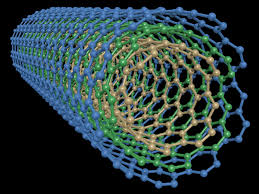
Carbon Nanotube Fibers: Properties, Applications, and Future Directions
Carbon nanotube (CNT) fibers represent a groundbreaking advancement in material science, combining the exceptional properties of carbon nanotubes into a macroscopic form suitable for real-world applications. These fibers offer remarkable strength, conductivity, and flexibility, making them a transformative material in various industries, from aerospace to electronics.
What Are Carbon Nanotube Fibers?
Carbon nanotube fibers are composed of aligned carbon nanotubes spun into threads or ribbons. These fibers retain many of the extraordinary properties of individual CNTs, such as high tensile strength and electrical conductivity, while providing scalability and ease of handling for practical applications.
Properties of Carbon Nanotube Fibers
- High Tensile Strength:
- Stronger than steel yet significantly lighter, enabling the creation of lightweight and durable materials.
- Electrical Conductivity:
- Comparable to or exceeding that of copper, making them ideal for advanced electrical systems.
- Thermal Conductivity:
- Excellent heat dissipation capabilities, essential for thermal management applications.
- Flexibility and Durability:
- Highly flexible without compromising structural integrity, suitable for wearable technologies and dynamic environments.
- Chemical Stability:
- Resistant to corrosion and degradation in harsh environments.
Applications of Carbon Nanotube Fibers
- Aerospace and Defense:
- Used in lightweight composites for aircraft and spacecraft, improving fuel efficiency and structural performance.
- Energy Transmission:
- Incorporated into high-performance cables for efficient power and data transmission.
- Wearable Electronics:
- Integrated into fabrics and devices for flexible, durable, and conductive wearables.
- Medical Devices:
- Employed in biocompatible materials for implants, sensors, and drug delivery systems.
- Structural Reinforcement:
- Enhances the strength and durability of concrete and other construction materials.
- Supercapacitors and Batteries:
- Serves as electrodes to increase energy storage capacity and efficiency.
- Electromagnetic Shielding:
- Provides shielding for sensitive electronic equipment against electromagnetic interference (EMI).
- Textile Innovations:
- Enables the development of smart textiles with integrated sensing and energy storage capabilities.
Advantages of Carbon Nanotube Fibers
- Lightweight:
- Offers high strength-to-weight ratios, reducing material costs and energy usage.
- Versatility:
- Applicable across diverse industries, from energy to healthcare.
- Sustainability:
- Supports the development of eco-friendly solutions, such as renewable energy systems and sustainable manufacturing.
- Scalability:
- Advancements in manufacturing techniques enable large-scale production.
- Multifunctionality:
- Combines mechanical, electrical, and thermal properties for integrated applications.
Challenges in Using Carbon Nanotube Fibers
- Cost:
- High production costs hinder widespread adoption in cost-sensitive markets.
- Uniformity and Quality:
- Ensuring consistent quality and alignment of CNTs during fiber production is challenging.
- Scalability:
- Scaling up production while maintaining the superior properties of CNTs requires advanced techniques.
- Integration with Existing Systems:
- Adapting CNT fibers to current manufacturing processes can be complex.
Future Directions
- Advanced Manufacturing:
- Research into cost-effective and scalable production methods, such as solution spinning and direct synthesis.
- Hybrid Materials:
- Combining CNT fibers with other materials, such as graphene or polymers, to enhance properties.
- Energy Applications:
- Expanding use in next-generation batteries, supercapacitors, and energy transmission systems.
- Smart Materials:
- Developing adaptive materials with integrated sensing, energy storage, and self-healing capabilities.
- Biomedical Innovations:
- Exploring new uses in tissue engineering, regenerative medicine, and advanced diagnostics.
- Global Collaboration:
- Fostering partnerships between academia, industry, and governments to accelerate development and adoption.
Conclusion
Carbon nanotube fibers are a transformative material with immense potential to revolutionize industries ranging from aerospace to healthcare. Their exceptional properties, combined with ongoing advancements in production techniques, are paving the way for innovative applications and sustainable solutions. As challenges are addressed, CNT fibers will play an increasingly vital role in shaping the future of material science and technology.
